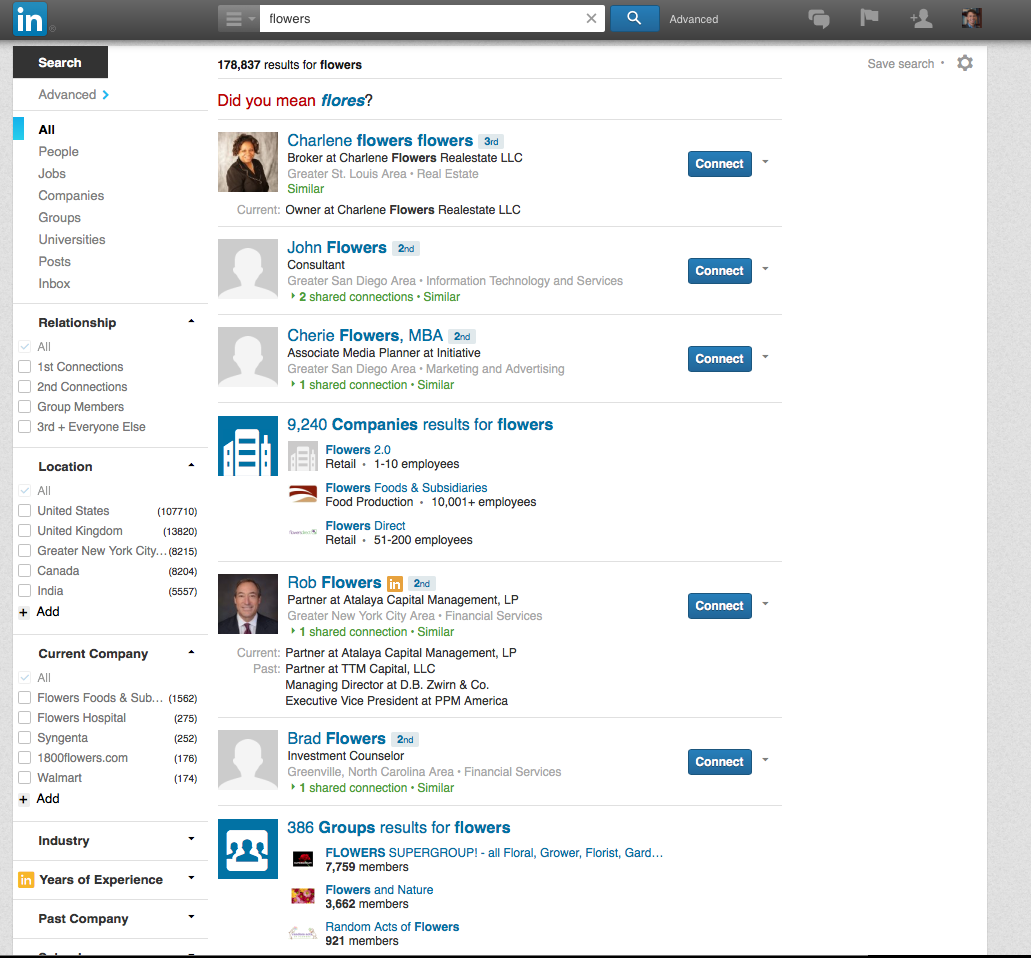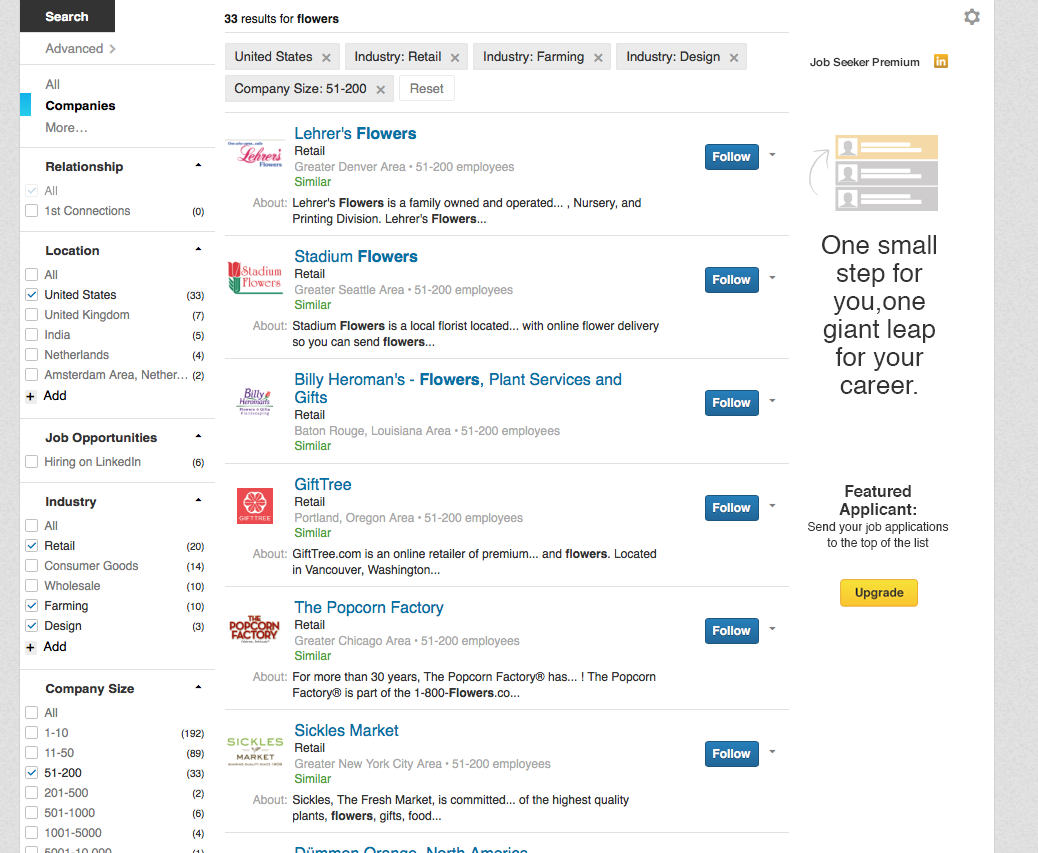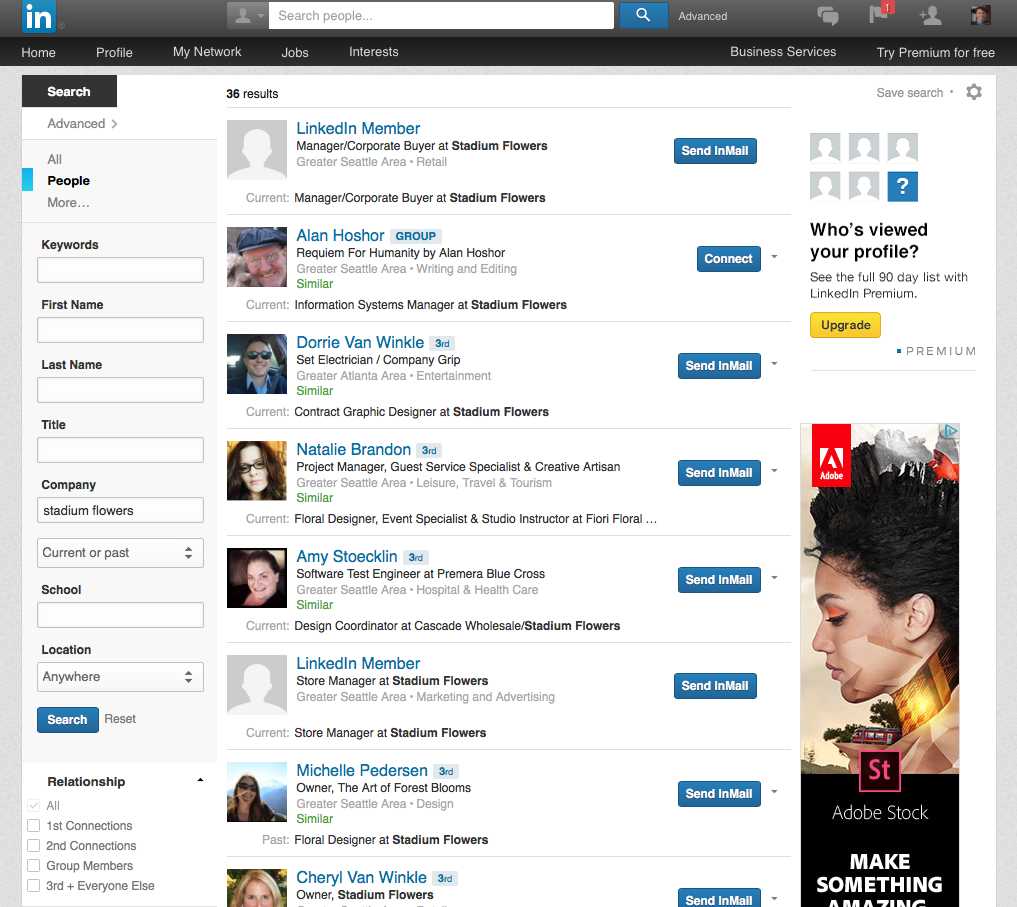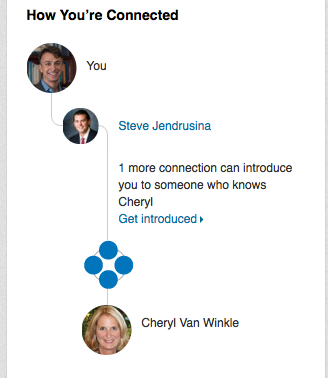How to Use LinkedIn to Change Industries
Changing industries can be quite challenging, and online job postings are a waste of time if you don’t fit a role perfectly. When you’ve determined that the time has come to change industries, here is exactly how to use LinkedIn to facilitate a move.
If you’re like many of my clients, chances are you happened into your industry by chance. You needed a job, a job was available and a decade later you know all too much about a career you could care less about.
Now the time has come to take action and change into an industry you believe will be much more engaging and exciting. (If you aren’t sure how to figure out what you are interested in, this article can help you find the right career).
So what do you do? Say, for example, you are tired of the corporate grind and you are looking to get into the flower business. However, all of your professional contacts are in your current industry, which is a far cry from the flower business. What’s more, none of your friends or family are in the flower business either.
Getting you from where you are to the industry you want to be in is where LinkedIn is pure gold.
Search companies through LinkedIn
The first thing you need to do is make sure your LinkedIn profile is looking good. There are classic mistakes people make around the photo they use (the photo isn’t clear or not very professional looking) and the title under their name (too vague, too simple, doesn’t contain any keywords). Don’t make those mistakes, create a great looking LinkedIn profile.
The second thing you need to do is search in LinkedIn for the relevant keywords. In this case, we are looking for flower companies so the keyword we’ll use is “flowers.â€
Note the search results that come up:

As you can see, at the top of the list are people with the last name “Flowers.†Not particularly helpful.
Further down you’ll see a list of 9,240 Companies that are associated with “flowers.†Clicking on this link will bring you to a series of companies that are in the business. So far, so good. The results look like this:

Narrow down your search with filters
At this point, you’ll notice that some of these flower businesses are in the US and others are abroad. You may want to click on the left hand side of the screen to filter by location (click the checkbox).
In addition, you may want to filter by company size and industry to ensure that you filter out mom & pop flower shops and companies like “Flowers Hospital,†which aren’t really in the flowers business.
Doing so gets to a much more appropriate list, at which point you may see some businesses that are a match.

For example, this match:

Find employees to connect with
Now that you know Stadium Flowers is a big employer in the Seattle flower market, it’s time to identify who works there that you could network with.
For this, you want to clear your search results and do an advanced search, with Stadium Flowers as the company. As you can see, the results show me who works at Stadium Flowers and what they do there.

Now, on the bottom left you’ll see that there is a filter by “Relationship†option. Ideally, these would not all be grayed out, indicating you’re closely connected to someone at Stadium Flowers. (As you can see, I am not.)
However, all is not lost. Let’s say that you’re trying to reach the person on the bottom of the list: Cheryl Van Winkle, the owner of Stadium Flowers. –After all, Stadium Flowers could use a person like you and she’s the person who could make it happen.
Clicking on her profile, you see how you are connected to her in the bottom right of the page (or in this case, how I am connected):

So, you have three options:
- Reach out to Steve to see if he can connect you to someone who knows Cheryl. Clicking the “get introduced†button facilitates this by drafting a note to Steve.
- Seeing if you can connect to someone within the company more readily and then get referred to Cheryl.
- Reaching out to Cheryl directly.
Going the more personal approach is always preferable, and so in this way you would talk to Steve (if you were me), he would connect you to someone he knows, and perhaps that person would connect you with Cheryl.
If you go the direct route, you have a couple of options:
- You can send an inMail to Cheryl (requires paid LinkedIn account), or
- Be a bit more aggressive and send her a request to connect
Formulate the right message
Regardless of which approach you take, the best thing you can do is try to either make a personal connection or offer some sort of value to the person you are trying to connect with.
Cheryl’s busy. She doesn’t have much time, and what you don’t want to do is upset her by being needy. Don’t say:
“Hi Cheryl, I want to change industries and get into the flower business and I saw your company and wanted to chat with you.â€
Remember, Cheryl is busy. She’s running a big company and she doesn’t care about your professional needs. Instead try to offer her value. For example:
“Hi Cheryl, I recently spoke with _______ (whoever that person is between you and Steve) and he thought we should talk. I have some ideas on how we might use internet marketing (or whatever your field of expertise is) to improve your business. –Let’s connect.â€
Now this is a note that Cheryl might respond to. You’ve made a personal connection and you’ve shown how you can help her. Your odds of getting a response went way up.
If at first you don’t succeed, try, try again!
Let’s say that Cheryl doesn’t respond. Perhaps it is time to find someone else to talk to. As you can see, below her name (and everyone else at Stadium Flowers) is green text that says, “similar.â€
Clicking this button will show you people who have similar profiles across LinkedIn. Look for another person like Cheryl and have at it.
Networking is a numbers game. You need to reach out to people and deliver value.
Join LinkedIn groups in the industry
Now let’s say that all of what I described feels a bit aggressive, and you don’t want to by pushy with your network. What do you do? Well, consider joining flower related groups in LinkedIn.
Our initial results above showed a variety of groups related to flowers. And chances are that Cheryl is a member of some flower related groups (you can see this on her profile) or someone in her company is.
You can then join these groups and then contact other individuals in that group directly. Perhaps more importantly, you can see what the issues are that people are dealing with in the industry, become more educated, contribute a bit by posting on the groups and greatly increase your odds of a successful career transition.
LinkedIn tactics aside, when you are looking to change industries, online job postings are going to be very near useless to you. The people scanning these listings are looking for round pegs that fit in round holes as precisely as possible.
Networking is your only shot at having a conversation with someone who sees the value of bringing your outside industry expertise to their company.
So take the time to create a clear elevator pitch for yourself, rehearse the questions you want to ask the people you meet, and go for it. Action is the only way to create a great career.
Thinking of making a move to a new industry but need a little extra help? A career coach can help! Browse our directory of career coaches and get a FREE consultation or request a personalized coach recommendation!
About the Author George Karris
George Karris is a former corporate executive who coaches professionals on how find opportunities that balance their ambition, purpose and overall happiness. He has a track record of professional success that includes setting strategy for a $4B firm, raising millions for a startup, and leading a team of over 200 people. He has an MBA from Harvard Business School and has studied positive psychology with Tal Ben-Shahar, Shawn Achor and Tony Schwartz. Connect with George on Noomii and his website.

